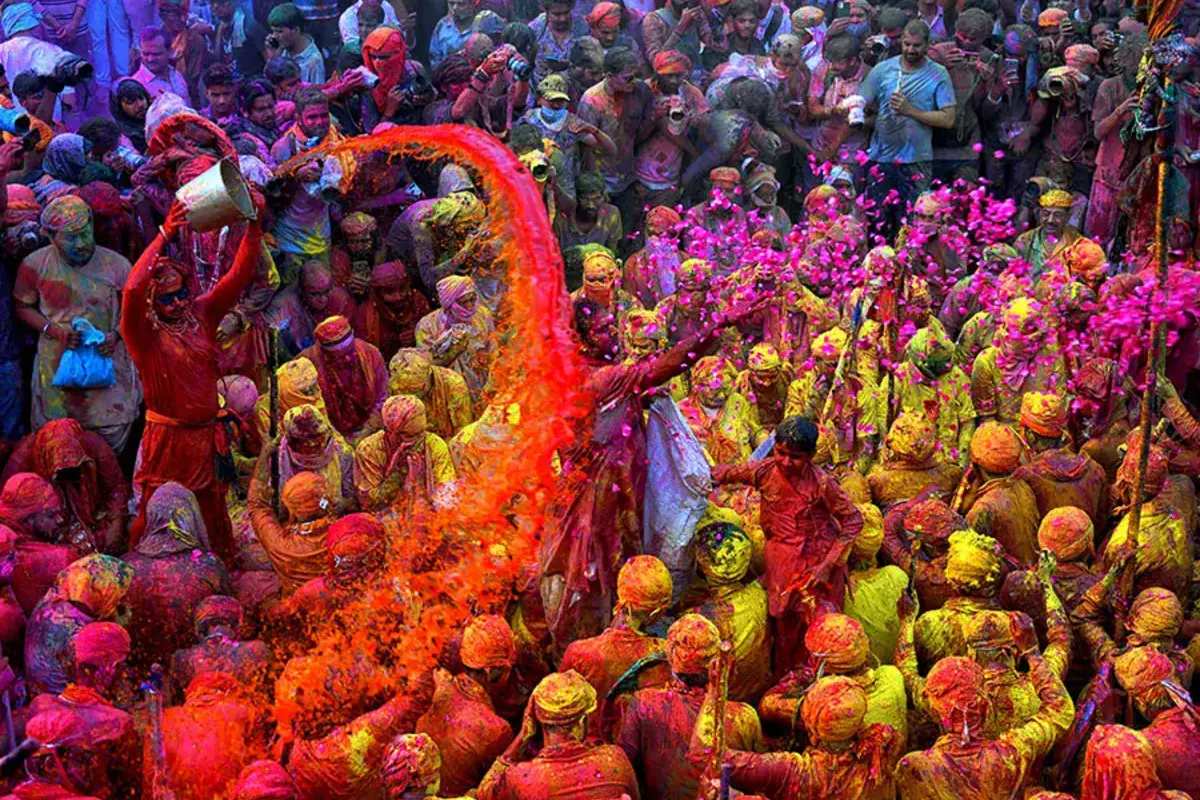
Holi Celebration
Holi, also called the “Festival of Colours,” “Dol jatra,” or “Basanta Utsav” in West Bengal, Assam, and Tripura, is one of the most colorful and joyous Hindu holidays. It is celebrated with great enthusiasm and joy by Indians all over the country and around the world.
Holi, which signifies the arrival of spring and the end of winter, is typically observed in late February or early March in the Gregorian calendar. Holi is aligned with the full moon or Purnima in the evening of the Phalguna month in the Hindu calendar.
It’s a time for people to get together, set their differences aside, and celebrate the bright moments in life. As everyone eagerly anticipates celebrating Holi in 2024, find out the date, time, customs, and significance of the festival in India by reading on.
Holi will be observed on Monday, March 25, 2024, this year. Holika Dahan, or Choti Holi, is observed on Sunday, March 25, 2024, one day prior to Holi.
History and Its Importance
While Hiranyakashipu wanted to be worshipped, his son Prahlad was more interested in Lord Vishnu. Hiranyakashipu chose to punish his son because he was offended. He invited his fire-impervious sister Holika to sit with Prahlad in the flames. When she did, Prahlad was unharmed but Holika was killed by the flames. After taking on the form of Narasimha, Lord Vishnu killed Hiranyakashipu. This Holika occurrence is called Holika Dahan.
The celebration of Holi also honors the divine love shared by Lord Krishna and Radha. Consequently, Mathura and Vrindavan celebrate a lavish version of Holi.
Also Read: Sweaty Palms Making You Conscious? Here’s The Perfect Solution For You
Rituals of Holi Puja
There are two main days to the Holi festival, each with its own customs. The first day, known as Choti Holi or Holika Dahan, is devoted to setting up and then lighting a bonfire. This wood-and-combustible-materials pyre represents the letting go of negativity and past transgressions. Invoking blessings and protection, the custom involves encircling the pyre with a sacred white thread known as mauli and offering holy water, kumkum (vermilion powder), and flowers as part of a puja (worship). The bonfire is lit as the culmination of these observances, symbolizing the symbolic burning away of ego, negativity, and evil influence.
The vibrant center of Holi is celebrated on the following day, Dhuleti. Using water guns and balloons, participants take part in a joyful immersion of colored powders (gulal). This lighthearted deed goes beyond simple amusement; it represents the dissemination of love and joy, the eradication of old grudges, and the promotion of societal harmony.
The consumption of traditional sweets like gujiya and refreshing drinks like thandai enhances the festive spirit even more. These gastronomic treats not only entice the palate but also serve as a catalyst for fostering closer ties within the community. By enjoying these treats together, families and friends create a sense of cohesion and solidarity. The vivid color scheme, delicious cuisine, and lively ambiance provide a special chance to let go of inhibitions, embrace rejuvenation, and savor the company of loved ones.
Holi is a festival of forgiveness and reconciliation, since the colors of the festival wash away past grudges. By means of these customs, Holi represents the spirit of harmony, rebirth, and happiness, going beyond simple celebration.
To read more such news, download Bharat Express news apps


















